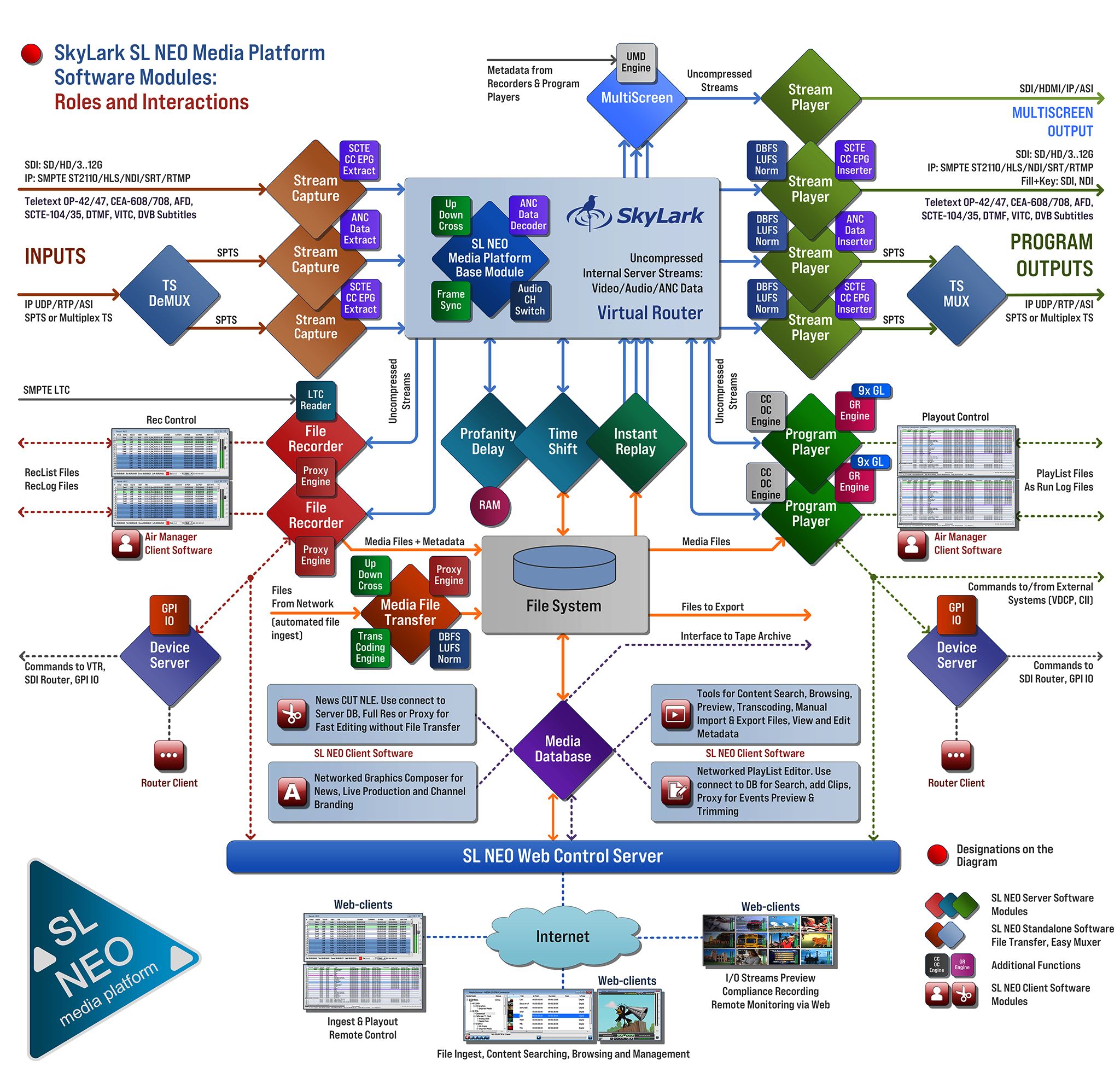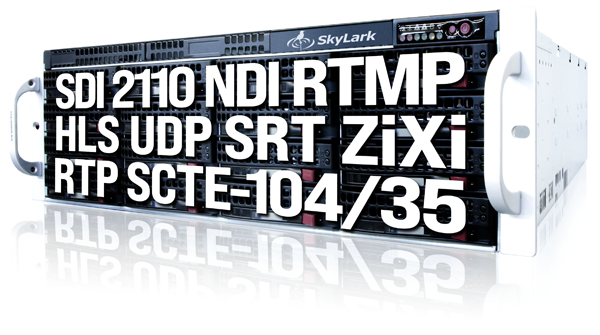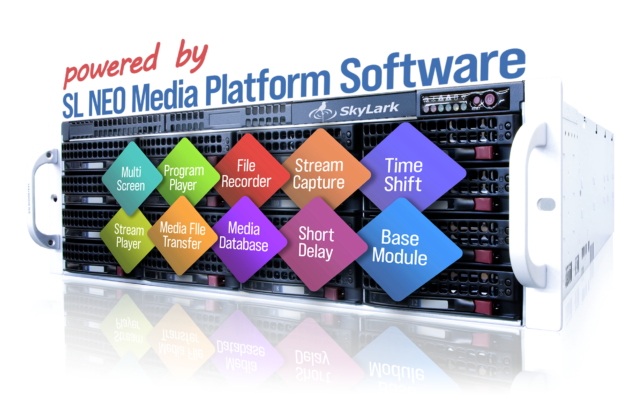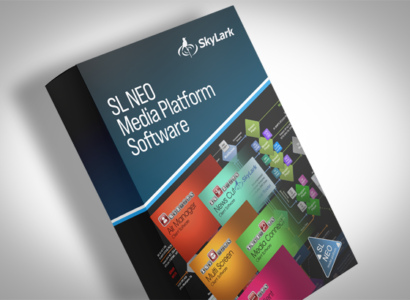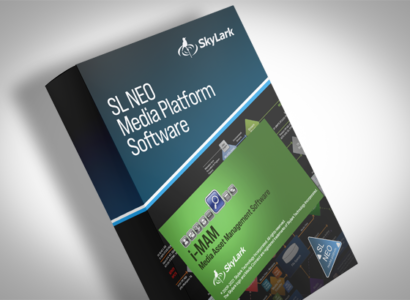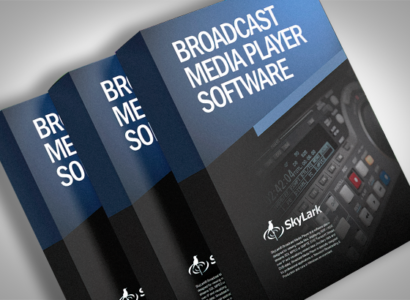What components are used to assemble the SL NEO Servers?
We use components from the world’s leading manufacturers of professional server equipment — Intel, Supermicro, Dell, HP, Adaptec, Matrox, Dektec, Nvidia. The requirements to professional equipment for the media industry are very high and we focus on reliable, verified and effective products.
How long will it take to make the order?
Servers according to individual configurations are assembled and configured in up to 60 business days after payment for the order. The assembly speed is directly depending on the delivery time of server components, namely Matrox and Dektec I/O cards. Anyway, we will assemble your order as fast as possible.
Is it possible to expand the functionality of the server during its use?
You can order the SL NEO server platform with a performance reserve in order to purchase and activate the necessary software options during the exploitation. We are ready to consider requests for activation of additional functions on any SL NEO server, but we cannot guarantee that the platforms that were not initially provided with performance reserve will cope with the additional load. In such cases we recommend to test your platform before purchasing the options.
Ordering Information
It is necessary to define the maximum number of Server Inputs (Capture Ports) as summ of all Streams Sources for needed Processes:
- Streams for Recording Channels,
- Full Screen Live Sources in Program Channels and for PIP in Graphics Layers,
- Fill + Key Live Sources in Program Graphics Channels and for Graphics Layers,
- Additional Input Streams for Multiscreen and for Stream Players Software Modules (stream duplicates on they inputs and internal SL NEO streams are not counted)
Next, you need to select the types of Hardware Interfaces and Formats for the input Signals and Streams from list of Supported.
SkyLark policy does not provide additional licensing for capturing of Media Streams Embedded ANC & MPEG2 Data: SCTE-104/35, DTMF markers, Teletext & Closed Captioning Data, VITC/AFD/WSS Data, DVB/ATSC Subtitles & EPG.
- Necessary to specify the number of file recorders that will work simultaneously and their formats: UHD, 1080p50/60, 1080i 50/60. or SD.
- Need to specify the number of simple file players (playlist playback without graphics) that will run concurrently and their formats (UHD, 1080p50/60, 1080i 50/60. or SD).
- Number of program channels with graphics (playlist playback, live sources in the program, 9 graphics players) that will work simultaneously and formats for the program channels.
SkyLark policy does not provide additional licensing for using external commands to control events in the playlists of program channels: SCTE-104/35 tags, DTMF, GPI commands: the functionality is included in the playlist licenses. Licensing is required to generate SCTE-104/35 tags.
Recorder options:
- LTC In, GPI I/O, VDCP over IP Software License, Device Server (VTR Control, SDI Router Control Software License).
Options for software players:
- GPI I/O, VDCP over IP Software License,
- Device Server (SDI Router Control) Software License,
- SCTE-104/35 Generation Software License,
- EBU R128 Loudness Normalization Software License,
- Closed Captions Generation from File. Software License,
- Live Closed Captions Generation. Software License.
- Transfer Manager is a software package designed to automatically move media and metadata files between nodes in production systems.
- Processing when moving files: changing codec, file container, up/down/cross conversion.
- Audio processing: audio level change, audio level normalization by dBFS scale, volume level normalization by LUFS scale.
- Transfer Manager Lite is a software suite for automatic file transfers. Works without processing, and does not change files.
- Additional HD SDI/HDMI output is designed to display all input/output signals on a video monitor screen in multiscreen mode. In addition to SDI/HDMI, the multiscreen output format can be configured to generate IP streams.
- Integration with recorders and software players lets you visualize service information (TC values, clip IDs).
- Alarms: triggers when a freeze frame or black box is detected, and if the audio volume exceeds or underscores the set dBFS level.
- Short Delay. In cases where a delay of several minutes of live broadcasting with editing is not possible, Profanity Delay mode is used: the output signal is delayed by 5 to 30 seconds and unwanted moments are «blocked» by pressing buttons with special effects from the list. The short delay is used in «classic» broadcasts and webcasts on social networks.
- Time Shift — Signal delay mode from 3 minutes to a few hours, can be used for both program production and beltcasting with a time shift from the central station, when broadcasting belts are spread from east to west of the center.
- Define the maximum number and types of output audio-video signals and streams that the server must simultaneously generate: encode and output signals and streams for each program, to display Multiscreen signal on the SDI/HDMI output, or encode this signal into IP.
- Select the types and number of hardware interfaces to output streams and signals (SDI/ASI/IP) and specify the formats they will work in (UHD, 1080p50/60, or 1080i 50/60). See «Technical Options» for a complete list.
SkyLark policy includes additional licensing for multiplexing ANC data: SCTE-104/35 tags, teletext signals, closed captioning, AFD data.
- Trustworthiness is ensured by 100% «hot» redundancy of the servers. Redundant playout channels for all channels, server storage contents, including database records, are automatically and continuously synchronized during operation.
- The «client-server» architecture allows you to quickly switch to another workstation if any of the network workstations fail, with no data loss or broadcast interruption.
.
Общие технические характеристики серверов SL NEO
| Platform |
Supermicro 2...4U, two power supply modules in hot standby, 1 or 2 Intel Xeon Gold CPU, 48/96Gb DDR4 RAM, 1 or 2 in RAID1 SSD 3D NAND TLC for OS, 2 ports 1GbE, Additional 1GbE and 10GbE ports are optional. Built-in or external array, configuration and volume are determined at the ordering stage. Windows Server 2022 x64 Eng |
| I/O ports, recorders, software players |
Pluggable or fixed I/O ports for SD/HD 1080i 50/60: up to 12 Pluggable or fixed I/O for SD/HD 1080p 50/60: up to 8 Pluggable I/O ports for UltraHD: 2 File recorders: 0...12 File players without graphics: 0...12 Software players (live/file) with original graphics: 0...8 |
| Video formats and color spaces |
625i/525i, 720p, 1080i/1080p, 2K cinema 2048x1080p, 2160p 25/29,97/50/59,94/60 fps Color Spacing: BT.601/709/2020, SMPTE ST2084, ARIB STD-B67 |
| I/O streams: interfaces, protocols, codecs |
SDI: SD/HD/3...12G SDI, 4x 3G SDI/Embedded Audio Genlock Reference: Analog Tri-level or Bi-level IP: SMPTE ST2110 IP: HLS/NDI/SRT/RTMP pull/push DVB IP: UDP/RTP Unicast/Multicast SPTS/MPTS DVB ASI: SPTS/MPTS Video Codecs: MPEG2/H.264 Audio: 48kHz/16/24 bit PCM, ADPCM, MPEG-1 L-II/III, AAC, AC3, AC3 passthrough |
| ANC Data (decoding, retransmission), generation - optional |
OP-42/47 Teletext (retransmission) OP-42/47 Closed Captions (retransmission, generation) CEA-608/708 Closed Captions (rebroadcast, generation) DVB Subtitles in SPTS SCTE-104/35 with metadata VBI/VANC Data: VITC, AFD, WSS |
| Receiving external control commands |
SCTE-104/35 with metadata VDCP over IP, GPI, DTMF Tones SL NEO API |
| Interfaces and I/O cards |
Matrox DSX LE3/LE4 Boards Mellanox ConnectX Network Adapters Dektec DTA-2172/2174B/2175/2178/2179/2195 SDI/ASI Boards Dektec DTA-2160/2162 ASI/IP Boards with FEC DataPath Vision RGB Boards Blackmagic DeckLink Boards Standard Ethernet Interfaces IEEE1394 Interfaces DirectShow Devices |
| Codecs for files (recording and playback) |
SD/HD: DV25, DVCPRO25, DVCPRO50, DVCPROHD100, HDV IMX 30/40/50 XDCAM EX SP/HQ XDCAM HD LP/SP/HQ.422 DNxHD 120/145/180/220 AVCHD PRORES HQ/SD/LT AVCI 50/100 MPEG2 I-Frames/Long GOP H.264 L I-Frames/Long GOP Ultra HD: X.264 8/10 bit XAVC I-Frames/Long GOP PRORES SQ/HQ DNxHR SQ/HQ Proxy: MPEG2/H.264 Audio: RAW 16/24 Bit PCM ADPCM MPEG-1 L-II/III AAC, AC3 |
| File containers |
Microsoft AVI MPEG PS/TS QuickTime MOV DV DIFF MXF(OP-Atom) MXF(OP-1A) MXF-D10 MP4 MPG GXF |
| File formats with alpha |
AVI, MOV (32-bit Uncompressed, SL NEO JPGA Codecs) TGA, PNG, PSD Files and Sequences SLG (SL NEO Graphics Compositions, XML-based) |
| Recording/playback environments |
OS file system (work with files) SL NEO Media DataBase (working with clips) Avid Unity/Interplay (recording only) Number of file streams for one recorder - 2 (Full Res + Proxy) |
| SDI switch management protocols |
Grass Valley Triton BDS Grass Valley Nvision/Native Protocol/Vega/M-2100 Nevion Vikinx v128/Thor Leitch Kramer BMD Videohub Ethernet/RS-232 Snell Switcher/Remote Protocol Evertz Quartz/QMC-2 Sierra XXvse Utah SC-4/RCP-1 Pro Bel SW-P-02/SW-P-08 Venux VM/SI/3000 ASCII Ross Video Presmaster/NK-SCP/A ELPRO SDZHD Series AJA KUMO Imagine LRC LES Profitt |
| Managing external devices |
CII (Chyron Intelligent Interface) Ember+ (Junger Audio) TSL5 UMD Protocol Sony 9-pin Remote Protocol (VTR/DDR) GPI, DTMF Tones |
| Other protocols and functions |
SNMP monitoring (Hardware/SL NEO Software) NTP/PTP Client SMB/CIFS, FTP File Transfer |
| LTC receivers (optional) |
Adrienne AEC-41 Plura PLC Miranda Little Red Horita TCI-50 |
| GPI I/O devices (optional) | Ontrak ADU200/ADU2X8 |
| Pushbutton panels (optional) | XKEYS XK-24/60/80 |
| Hardware/software options |
LTC In GPI I/O VDCP over IP Software License Device Server (VTR Control) Software License Device Server (SDI Router Control) Software License Profanity Delay Software License Time Shift Delay Software License SCTE-104/35 Generation Software License EBU R128 Loudness Normalization Software License Closed Captions Generation Software License Live Closed Captions Generation Software License MultiScreen Output (HD SDI/HDMI/IP) Transfer Manager Software License Additional I/O SDI/IP Channels (Capture or Streaming) Additional I/O IP ST2110 Channels (Capture or Streaming) GPU Support TS Mux/DeMux for IP/ASI Streams Software License Live Slow Motion Option (includes JL Cooper Jog/T-Bar Controller and Software License) |
The diagram shows the roles and connections of the main modules of the SL NEO platform. The number of modules is shown conventionally, the diagram is of a general conceptual character and does not reflect all the interrelations between the software elements.
